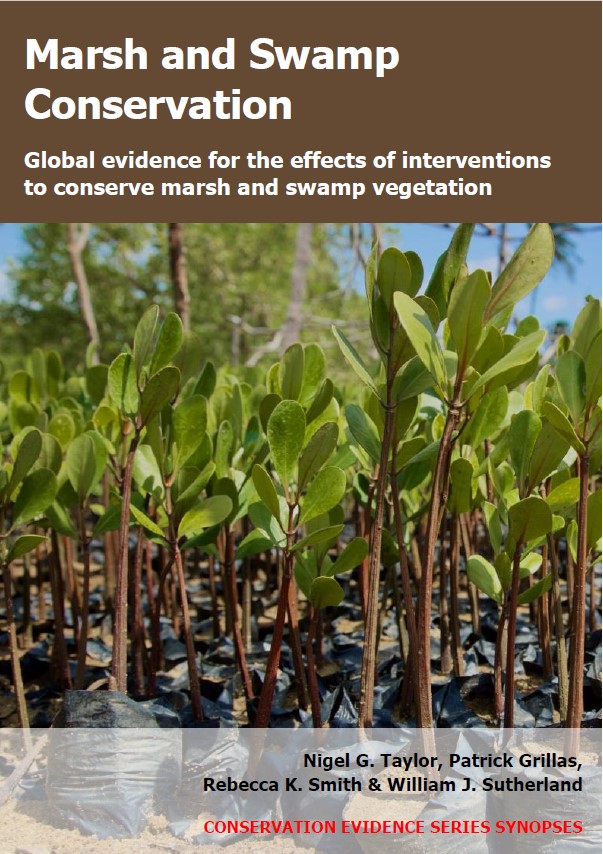Physically remove problematic plants: brackish/salt marshes
-
Overall effectiveness category Unknown effectiveness (limited evidence)
-
Number of studies: 1
View assessment score
Hide assessment score
How is the evidence assessed?
-
Effectiveness
68% -
Certainty
31% -
Harms
0%
Study locations
Supporting evidence from individual studies
A replicated, randomized, paired, controlled, before-and-after study in 2005–2007 in three brackish and salt marshes invaded by pepperweed Lepidium latifolium in California, USA (Boyer & Burdick 2010) found that physically removing pepperweed before spraying herbicide increased native plant cover more than spraying alone. Averaged over the two years following intervention, cleared/sprayed plots had greater cover of native plants (year one: 26–124%; year two: 33–195%) than plots that were only sprayed (year one: 10–67%; year two: 19–113%). In contrast, cleared/sprayed plots had lower pepperweed cover (year one: 0–14%; year two: 5–44%) than plots that were only sprayed (year one: 2–60%; year two: 25–88%). Before intervention, plots destined for each treatment had statistically similar cover of native plants (10–33%) and pepperweed (90–100%). For data on the cover of other individual plant species, see original paper. Methods: In April 2005, five sets of 2 x 2 m plots were established each of three pepperweed-invaded marshes. In each set, there was one replicate where pepperweed was removed (including roots to 20 cm depth) before spraying regrowth with herbicide (1.25% glyphosate), and one replicate that was only sprayed with herbicide. Treatments were randomly allocated to plots. Vegetation cover was measured before (April 2005) and quarterly for two years after (April 2007) intervention, in 1-m2 quadrats.
Study and other actions tested
Where has this evidence come from?
List of journals searched by synopsis
All the journals searched for all synopses
This Action forms part of the Action Synopsis:
Marsh and Swamp Conservation
Marsh and Swamp Conservation - Published 2021
Marsh and Swamp Synopsis





)_2023.JPG)














